
Spoiler alert: Moth form was attained.
I have to say I am both flattered and abashed that several people have taken the time to ask me what wound up happening with the luna moths I was rearing. I hope I can distract you all from the tardiness of this post with a MASSIVE PHOTO DUMP. Of course, most of these photos were taken with my phone, so, half credit?

A luna moth cocoon wrapped in leaves.
I left for a weekend research trip and returned to find all but one of my surviving caterpillars had spun themselves up in silken cocoons, also taking advantage of leaves, branches, paper towels, and just generally whatever was available. Most of my cocoons were showed no further signs of life, but two remained rather terrifyingly lively–rattling and shaking around like jumping beans when disturbed.

The mystery of the empty cocoon.
Taking the advice of experienced luna moth rearer Shawn Hanrahan, I slipped paper clips into the cocoons and hung them all up in my office to await further developments. Possibly, I didn’t think this through very well. A couple of weeks later I tapped one of the active cocoons hello only to discover a hollow shell with no sign of the adult moth. Presumably it was off on an adventure in the lab.
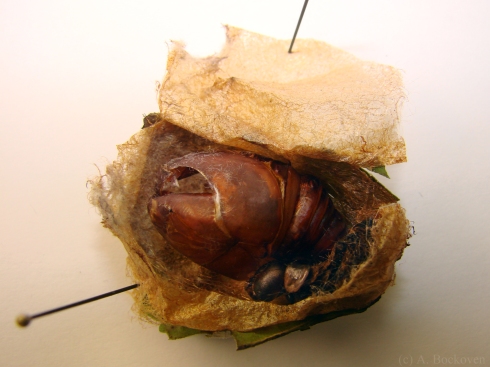
Cast off skins inside the empty cocoon.
Of course I opened up the cocoon to check out the cast off skins. When a luna caterpillar spins its cocoon it briefly be comes a “prepupa,” shortening and losing the ability to walk. A few days later it sheds its skin (the caterpillar shed at the bottom of the picture) and becomes a pupa.
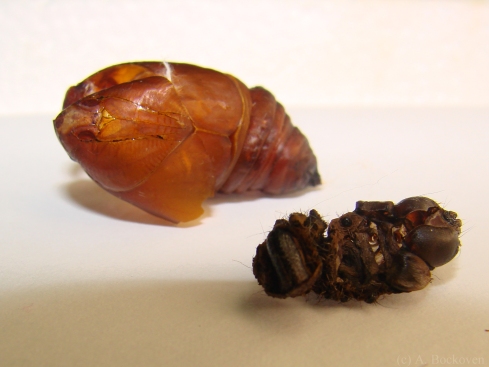
Cast off pupal and larval exoskeletons.
The large red-brown pupa looks much like any other lepidopteran pupa. The developing wings and antennae are visible wrapped around the top of the pupa, while a wiggly abdomen is responsible for the movements and rattling of the more active cocoons when disturbed. After about two weeks (unless it is overwintering) the pupa molts again, and cuts its way out of the upper end of the cocoon using serrated spurs near the base of its forewings.
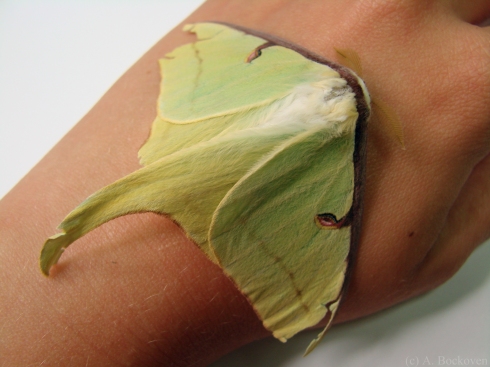
Tattered male luna moth recovered after lab adventure.
I did eventually recover my wayward vagabond. He turned up a few days later, tattered from his adventure, no longer with the energy to fly. Adult luna moths live only a few days to a week, long enough to mate and reproduce. They survive entirely on energy stored as hungry hungry caterpillars–adult moths don’t even have mouthparts.
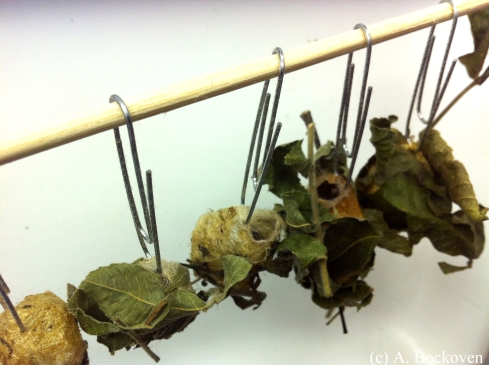
Row of hanging cocoons, some with exit holes.
Having learned my lesson with one adventurer, I moved the other cocoons into a glass terrarium. Above, you can see the cocoons hung up in a row by their paperclips. Several have emergence holes at the top. I didn’t manage to witness any emergences; they take place early in the morning, giving the moth time to pump up its wings before the evening flight period.
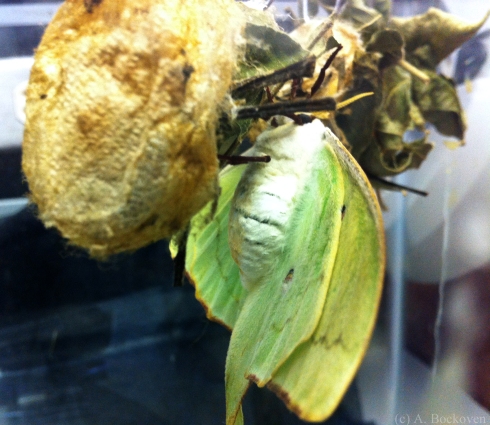
Luna moth hanging from its cocoon.
The moths not only have to get their wings straightened out, they also have to void their liquid meconium–basically all the stored wastes from their transition from caterpillar to butterfly. This staining reddish brown mess is the reason you should never hang your luna moth cocoons over carpets or anything difficult to clean.
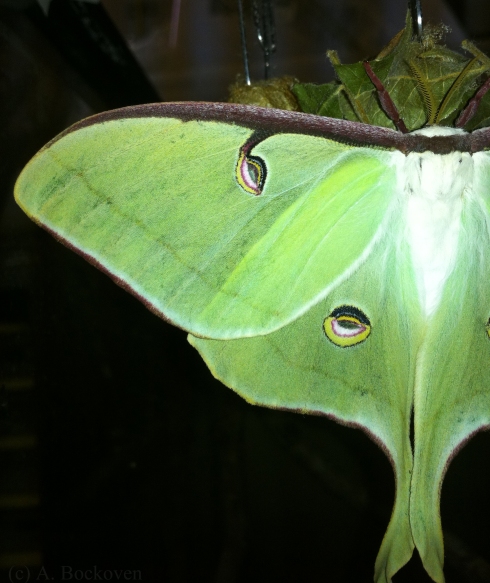
Luna moth on cocoon with fully inflated wings.
My lunas have been emerging one by one every few days over the past couple of weeks. They make for a fun surprise. Male luna moths can be distinguished from females by their antennae, which have broader, more plumose fans, in order to help them detect female moths. They also exhibit different behaviors.

Female luna moth on wall.
Upon emerging and settling in to their new form, female luna moths typically find a perch, and spend evenings emitting a special male-attractant pheromone to help potential mates find them. Males meanwhile, disperse in search of females, whom they can detect across great distances.

Underside of a male luna moth.
In one impressive experiment, 26% of male Indian luna moths were able to locate caged females when released more than 6.5 miles away. What this translates to in a terrarium is that female moths left overnight will sit and chill, but male luna moths will flap around and tatter their wings to pieces….Not that I’m speaking from experience or anything.
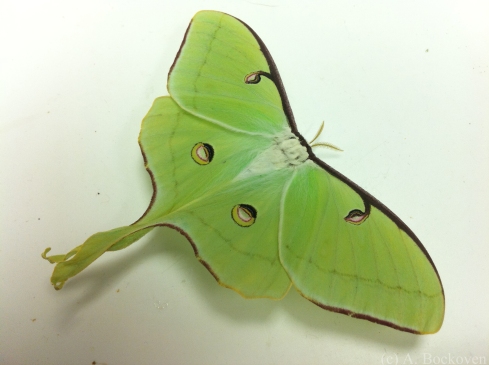
Ta dah!
Startling conclusion: I sucessfully reared moths to adulthood! Many of them with out significant trauma! I declare the luna moth saga a success…and move gratefully on to less time-consuming insects to rear and observe.
Keep reading:
Tags: Actias luna, Insects, luna moth saga, Luna Moths, Moths
















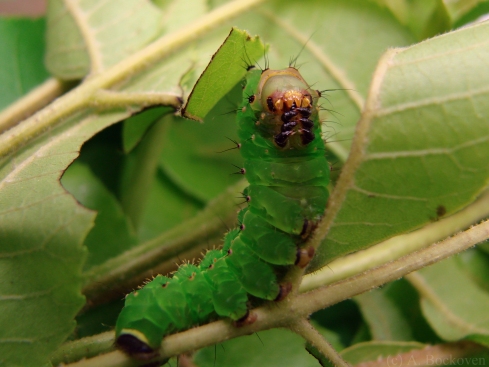



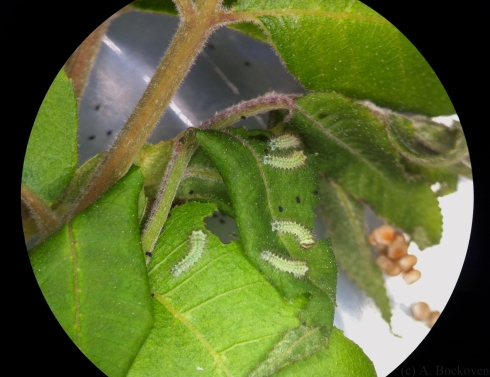

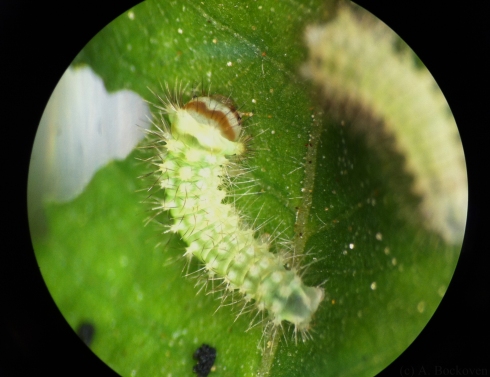
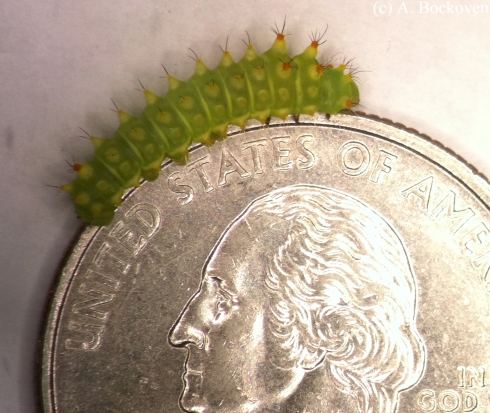








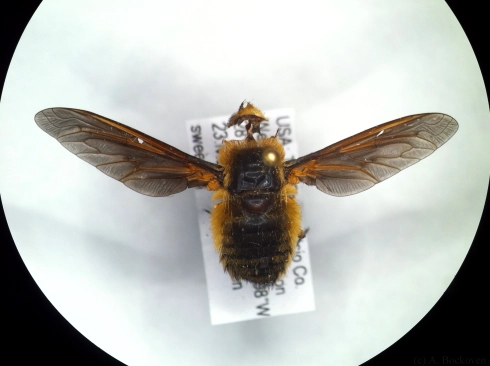
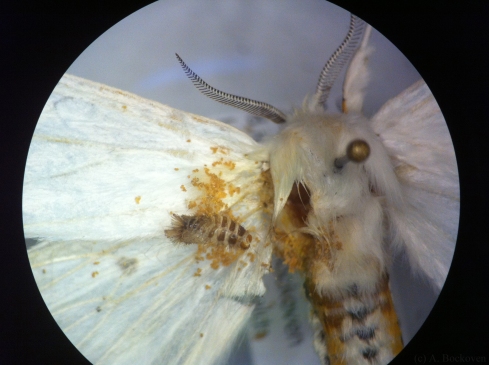
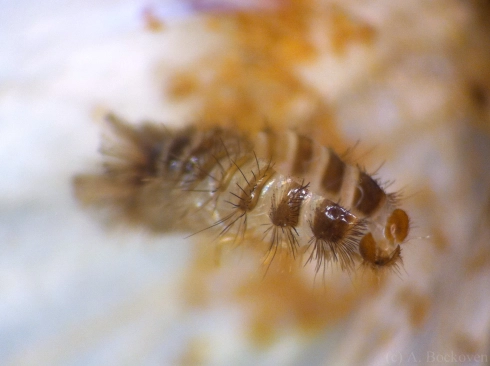
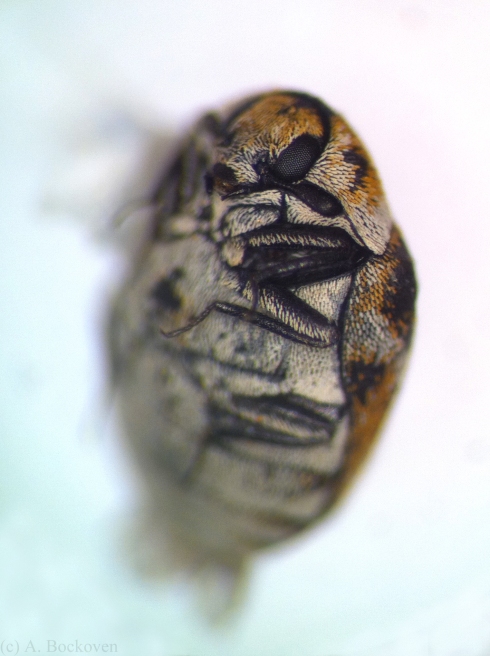
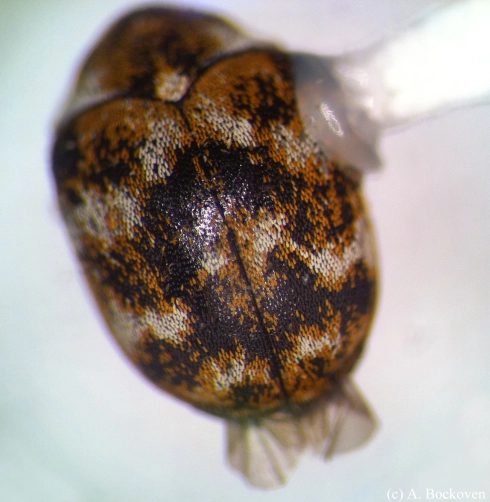
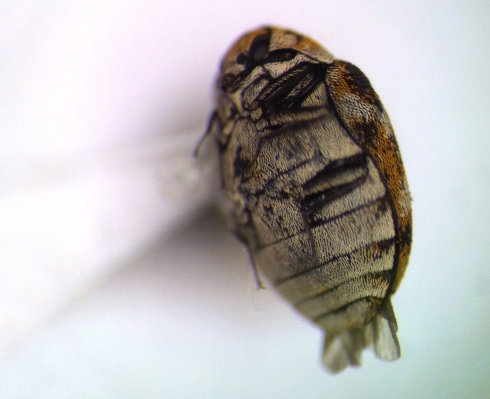
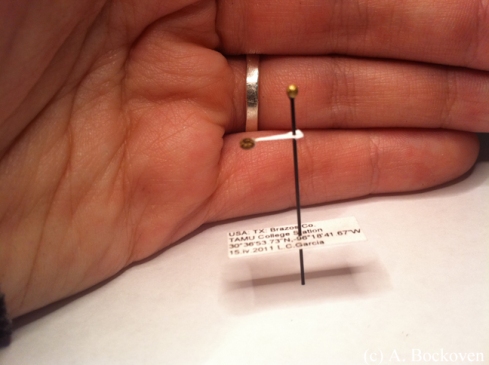



Recent Comments